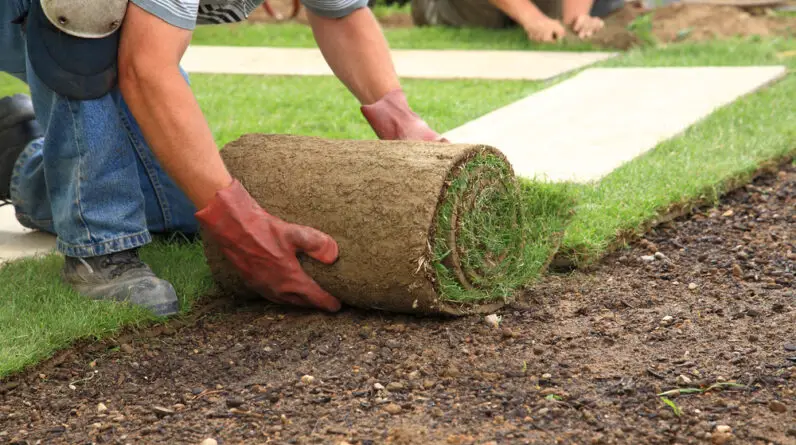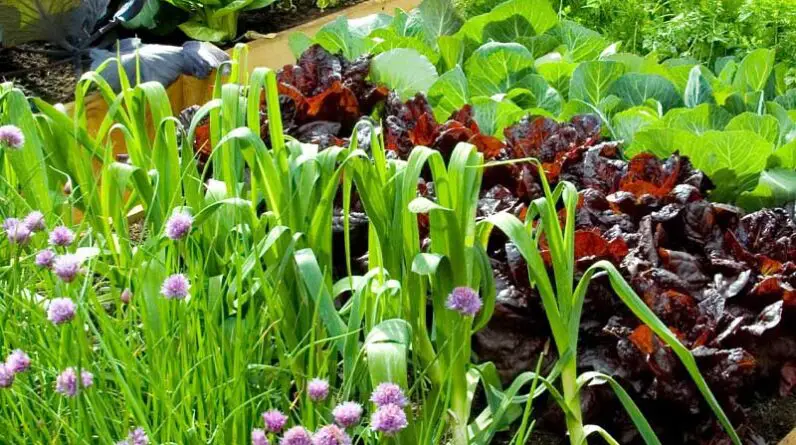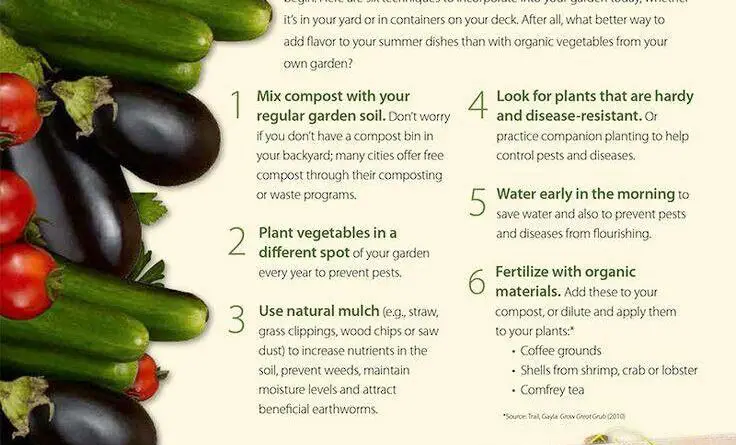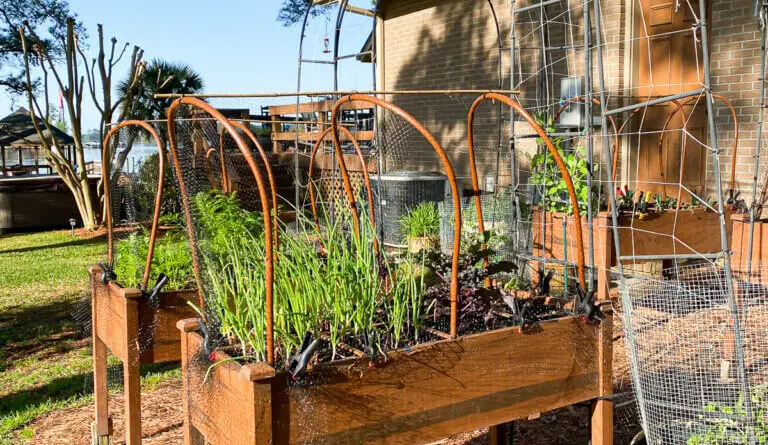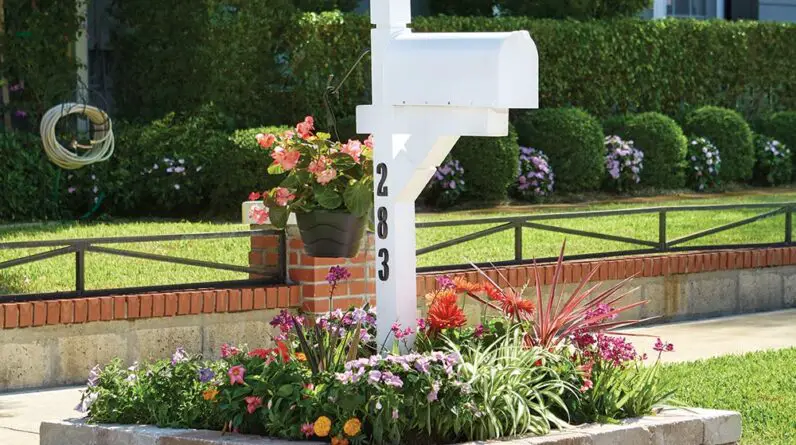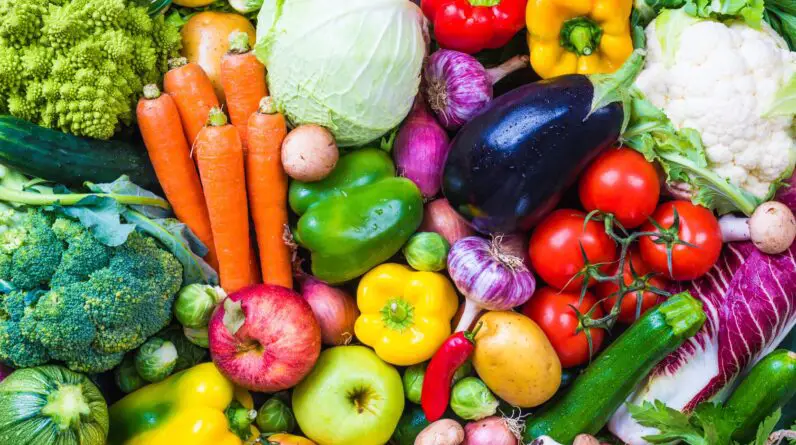
Creating a Small Vegetable Garden
If you have a small yard and want to enjoy the benefits of growing your own vegetables, don’t worry, we are here to help you. With a bit of creativity, you can still have a thriving vegetable garden even in a limited space.
Choosing the Right Location
The first step in creating a small vegetable garden is to choose the right location. Look for an area in your yard that receives at least six hours of direct sunlight each day. This will ensure that your vegetables get the light they need to grow and thrive. Additionally, consider any potential shade from neighboring trees or buildings that could affect the amount of sunlight your garden receives.
Determining the Size of the Garden
Next, determine the size of your garden based on the available space in your yard. Consider the dimensions of your space and decide how many rows or beds you can fit comfortably. Remember to leave enough room for pathways between the rows for easy access to your plants.
Preparing the Soil
Prepare the soil by removing any weeds or grass and loosening it with a garden fork or tiller. Add organic matter such as compost to improve its fertility and drainage. This will provide a healthy environment for your vegetables to grow.
Selecting Suitable Vegetables
When selecting vegetables for your small garden, choose compact and dwarf varieties that don’t take up much space. Consider plants like tomatoes, peppers, lettuce, radishes, and herbs that can be grown in containers if space is really limited.
Creating a small vegetable garden in your small yard is possible with careful planning and thoughtful choices. Follow these steps and you’ll be enjoying a bountiful harvest in no time!
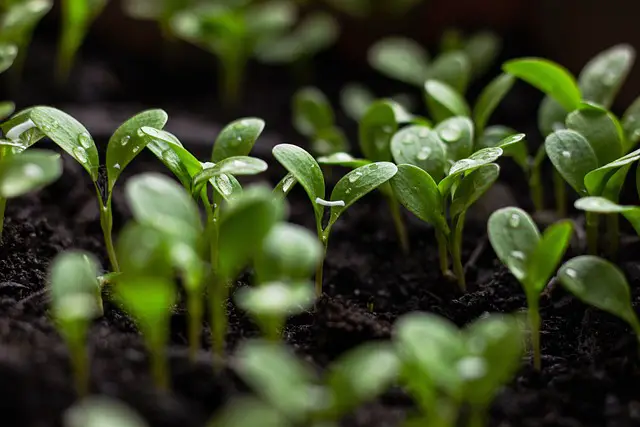
Utilizing Vertical Space
When it comes to creative vegetable garden ideas for small yards, utilizing vertical space is key. With limited ground area, it’s essential to think vertically and maximize every inch of available space. There are several innovative ways to achieve this.
Building a Vertical Trellis
A vertical trellis is an excellent option for small yards. It allows you to grow vining vegetables, such as beans, cucumbers, and peas, without taking up valuable ground space. By training these plants to grow upwards, you can create a stunning vertical display while optimizing your harvest.
Growing Veggies in Hanging Baskets
Hanging baskets are another fantastic option for small yards. They are perfect for growing compact vegetables like cherry tomatoes, peppers, and herbs. Hang them from pergolas, fences, or even on walls to add a touch of greenery to your space.
Constructing a Wall Garden
If you have a blank wall, consider constructing a wall garden. Attach containers or pockets to the wall to create a vertical planting area. This method is ideal for growing small leafy greens, such as lettuce and spinach, as well as herbs and strawberries.
Using Pots and Containers for Vertical Planting
Pots and containers are versatile and can be placed on balconies, patios, or even stairwell landings. Stack them vertically or hang them from hooks to make the most of your space. Plant a variety of vegetables, such as carrots, radishes, and salad greens, to create a beautiful and productive garden.
By incorporating these creative vegetable garden ideas, you can transform your small yard into a flourishing oasis.
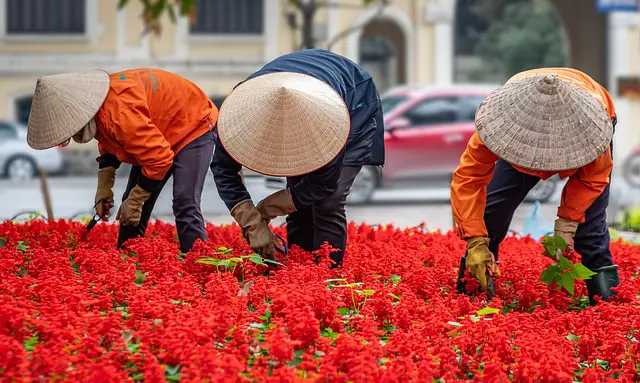
Companion Planting Techniques
In our quest to help you make the most of your small yard, we’ve discovered a fantastic solution: companion planting. This age-old gardening technique involves strategically pairing vegetables that work well together, maximizing space, and promoting overall garden health.
Pairing Compatible Vegetables
When planning your vegetable garden, consider the compatibility of different plants. Some vegetables thrive when planted alongside certain companions, while others are better off kept separate. For instance, tomatoes and basil make excellent neighbors, as the aroma of basil repels harmful pests that can damage tomato plants. Other compatible pairs include carrots and onions, which complement each other’s growth patterns, and peas and corn, which provide natural support to each other.
Beneficial Plant Combinations
Companion planting also offers numerous benefits beyond pest control. For example, interplanting flowers such as marigolds with vegetables can attract pollinators like bees and butterflies, resulting in more efficient fertilization and higher crop yields. Additionally, certain plants can help improve soil quality by fixing nitrogen, such as legumes like beans or peas.
Natural Pest Control with Companion Planting
One of the biggest advantages of companion planting is natural pest control. By selecting the right companions, you can repel pests or attract beneficial insects that prey on harmful ones. For example, planting aromatic herbs like rosemary or sage near your vegetable patch can deter pests such as aphids or cabbage worms. Similarly, attracting ladybugs or lacewings by planting flowers like daisies or yarrow can help control pests like aphids and mites.
Incorporating companion planting techniques into your small-yard vegetable garden can be a game-changer. It not only optimizes your space but also promotes healthier plants and reduces the need for chemical pesticides, creating a more environmentally friendly and natural way to grow your own food. So get creative with your companion planting choices and reap the benefits of this tried-and-true gardening method!
Integrating Edible Plants into Landscaping
Are you looking for creative ways to grow your own vegetables in a small yard? Look no further! We have some fantastic ideas to help you integrate edible plants into your landscaping, creating a beautiful and functional space that you’ll love spending time in.
Incorporating Vegetables with Flower Beds
Who says vegetables can’t be attractive? Mix them in with your flower beds to add a pop of color and texture. You can plant varieties like rainbow chard and purple cabbage, which not only provide a visual feast but also offer excellent nutritional benefits. Consider using trellises or cages to support climbing vegetables like beans or cucumbers, which will add height and interest to your garden.
Blending Herbs with Ornamental Plants
Herbs are not only useful in the kitchen but also make lovely additions to any garden. Blend them in with your ornamental plants to create a sensory experience. Choose aromatic herbs like lavender and rosemary, and enjoy the delightful scents as you relax in your garden. Plus, they repel pests, making them the perfect natural pest control solution.
Creating Edible Borders and Pathways
Why settle for traditional borders and pathways when you can create edible ones? Plant low-growing vegetables like lettuce or strawberries along the edges of your garden beds to define the space and add an edible element. You can also create a pathway using stepping stones surrounded by herbs or creeping thyme, releasing fragrances with every step.
By incorporating these creative ideas into your small yard, you can have a beautiful and productive vegetable garden that will provide you with fresh produce all season long. So unleash your creativity and get gardening!
Developing Raised Garden Beds
One of the most effective strategies to maximize vegetable production in a small yard is to create raised garden beds. These raised beds provide numerous advantages, such as enhanced soil quality, improved drainage, and easier access for maintenance. In this section, we will explore the key steps involved in developing raised garden beds for your small yard.
Constructing Raised Beds
To begin, construct the frames for your raised beds using materials like wooden boards or cinder blocks. Ensure the dimensions are appropriate for your available space, typically ranging from 4 to 6 feet long and 2 to 4 feet wide. Place the frames directly on the ground or use bricks or pavers to elevate them slightly.
Filling Raised Beds with Adequate Soil
Next, fill the raised beds with nutrient-rich soil. A mixture of garden soil, compost, and organic matter will provide the ideal growing medium for your vegetables. Aim for a depth of at least 12 inches to accommodate healthy root growth.
Designing Raised Bed Layouts
When designing the layout for your raised beds, consider factors such as sunlight exposure and accessibility. Arrange the beds in a way that maximizes sunlight while ensuring ease of movement and maintenance. Utilize space-saving techniques such as vertical gardening or companion planting to optimize productivity.
With careful planning and the implementation of raised garden beds, even small yards can become productive vegetable gardens.
Utilizing Container Gardening
Container gardening is a versatile and practical solution for those with limited space. By using containers, you can easily grow a wide variety of vegetables in your small yard, patio, or balcony.
Choosing the Right Containers
When selecting containers for your vegetable garden, it’s important to consider their size, material, and drainage capabilities. Opt for containers that are deep enough to accommodate the roots of your chosen vegetables. Additionally, choose materials such as plastic, terra cotta, or wood that can withstand the elements and provide adequate insulation for the plants.
Using Different Types of Containers
Get creative with your container selection! Consider using hanging baskets, window boxes, or even repurposed items such as buckets, barrels, or old wheelbarrows. This not only adds visual interest to your garden but also maximizes the use of space.
Providing Proper Drainage
To ensure successful container gardening, it’s crucial to have proper drainage. This can be achieved by drilling holes in the bottom of your containers or lining them with gravel, allowing excess water to escape and preventing root rot.
Caring for Plants in Containers
Regularly water your vegetable plants in containers, as they tend to dry out quicker than those in traditional garden beds. Additionally, provide adequate sunlight and fertilize when needed to promote healthy growth.
With these container gardening ideas, you can create a vibrant and productive vegetable garden even in a small yard. So go ahead and unleash your creativity to enjoy fresh and delicious homegrown produce!
Exploring Aquaponics Systems
Aquaponics is a fascinating and innovative way to grow vegetables and fish together, making it an ideal option for small yards. It combines aquaculture, or the cultivation of fish, with hydroponics, which is growing plants in water without soil. The beauty of aquaponics lies in its self-sustaining nature, as the fish waste provides nutrients for the plants, and the plants filter the water for the fish.
Understanding Aquaponics
In an aquaponics system, water is continuously circulated between the fish tank and the plant growing beds. The fish waste, rich in ammonia, gets converted into nitrates by beneficial bacteria. These nitrates serve as fertilizer for the plants, allowing them to grow healthily. The plants, in turn, act as a natural filter, removing any harmful substances from the water before it returns to the fish tank. This symbiotic relationship between the fish and the plants creates a sustainable and resource-efficient ecosystem.
Setting up an Aquaponics System
Setting up an aquaponics system in a small yard is relatively straightforward. You’ll need a fish tank, grow beds, a water pump, and some PVC pipes to create the water circulation system. It’s important to create a balanced environment by monitoring water quality, maintaining proper pH levels, and providing adequate aeration and lighting for both the fish and plants.
Choosing Suitable Vegetable and Fish Varieties
When it comes to selecting plants for your aquaponics system, leafy greens like lettuce, kale, and spinach are excellent choices. They thrive in nutrient-rich water and require minimal maintenance. As for fish, options such as tilapia, trout, or catfish are commonly used in aquaponics setups. Research the specific requirements of each variety to ensure compatibility and success.
Aquaponics offers an exciting and space-saving solution for small yards. By harnessing the power of nature, you can create a thriving ecosystem that produces both fresh vegetables and fish at the same time. So, if you’re looking for a creative vegetable garden idea that maximizes limited space, why not consider exploring the world of aquaponics?
Creating Edible Vertical Gardens
If you have a small yard and want to grow your own vegetables, don’t worry! There are plenty of creative solutions that enable you to make the most of your limited space. One fantastic approach is to create edible vertical gardens, which not only save space but also add a unique aesthetic to your yard.
Building a Hanging Bottle Garden
One idea is to build a hanging bottle garden. You can repurpose plastic bottles by cutting them in half, adding soil, and planting your favorite vegetables such as herbs or lettuce. Hang the bottles from a sturdy structure, such as a trellis or railing, using ropes or hooks. Not only does this method save valuable ground space, but it also allows for easy watering and maintenance.
Growing Veggies in Gutters
Another option is to utilize gutters as a garden space. Mount a row of gutters horizontally along a wall or fence, filling them with soil, and planting your vegetables. This solution is perfect for growing shallow-rooted crops like radishes or lettuce. Plus, it creates a unique and visually appealing vertical garden.
Utilizing Vertical Grow Bags
Vertical grow bags are a fantastic option for small yards. These bags can be hung on walls, fences, or even stacked on top of each other. Fill them with soil and plant your favorite veggies, making sure to leave enough space for growth. They are excellent for growing tomatoes, peppers, or even strawberries.
With these creative ideas, you can transform your small yard into a thriving vegetable garden. Get started today, and enjoy the satisfaction of growing your own produce right at home!
Implementing Square Foot Gardening
One of the best ways to maximize the space in a small yard and still enjoy a thriving vegetable garden is through the use of square foot gardening. This method allows you to create designated beds that optimize planting density and promote efficient use of space.
Planning and Measuring Square Foot Beds
To begin, measure the available space in your yard and decide how many square foot beds you can accommodate. Divide the area into small, manageable sections and mark them off using string or stakes. Each square foot bed should ideally measure 4 feet by 4 feet, providing ample room for a variety of crops.
Optimizing Planting Density
Once the beds are marked, it’s time to consider planting density. With square-foot gardening, plants are strategically placed on each square foot, maximizing the use of space. Follow the recommended plant spacing guidelines for each type of vegetable to ensure healthy growth and optimal yield.
Rotating Crops for Maximum Yield
To prevent nutrient depletion and pest buildup, it’s important to rotate crops in your square-foot garden. This means planting different types of vegetables in the same bed each growing season. By rotating crops, you can maximize soil fertility and reduce the risk of diseases and pests.
With careful planning, measuring, and crop rotation, square-foot gardening can revolutionize your small-yard vegetable garden, allowing for a bountiful harvest without compromising on space. Try implementing this method and watch your garden thrive!
Conclusion
In conclusion, if you thought that having a small yard meant a vegetable garden was out of the question, we’re here to tell you otherwise. By getting creative with your gardening ideas, you can transform even the tiniest space into a thriving vegetable garden.
Container Gardening
One option that is perfect for small yards is container gardening. By utilizing pots, hanging baskets, and vertical space, you can grow a variety of vegetables without the need for a large plot of land. This method is not only practical but also adds a touch of visual appeal to your outdoor space.
Vertical Gardening
Another idea for small yards is vertical gardening. This involves growing your vegetables vertically using trellises, fences, or even old pallets. Vertical gardening maximizes your growing space and allows you to grow more plants without taking up valuable ground space.
Square Foot Gardening
Square foot gardening is a popular method for small yards, as it allows you to grow a large amount of vegetables in a compact area. By dividing your garden into individual square-foot sections, you can carefully plan and plant your vegetables to maximize space and yield.
Remember, no matter the size of your yard, there’s always a way to get creative with your vegetable garden. So don’t let limited space hold you back from enjoying the satisfaction of growing your own fresh produce!


